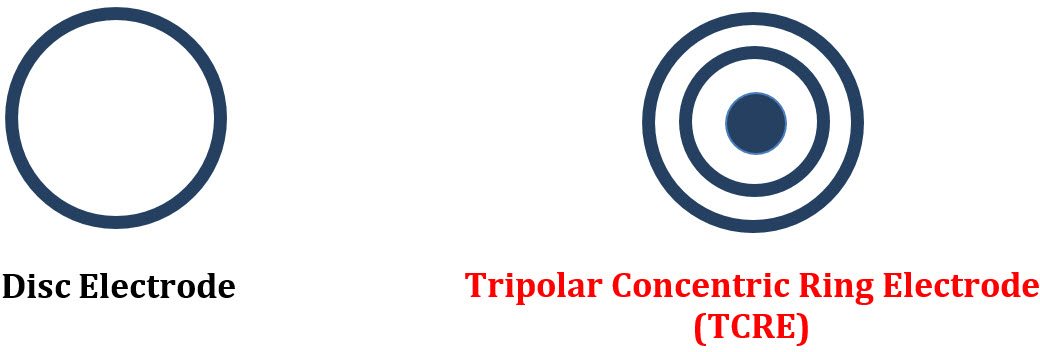What is the TCRE?
“TCRE” is the abbreviation for triploar concentric ring electrode. The invention of the TCRE represents a significant and radical improvement in the electrode design. Each TCRE consists of three electrode elements: the outer ring, the middle ring, and the center disc. The TCRE is distinctively different from the disc electrode which has a single element. The outer ring of the TCRE provides disc electrode biopotentials emulation.
What are the unique capabilities of the TCRE?
The TCRE performs the Laplacian automatically and takes bipolar differences of the surface potentials from its three closely spaced electrode elements. Noise that is common to each electrode element is automatically cancelled.
The TCRE can directly measure the Laplacian potential, improving efficiency over calculating the Laplacian from conventional disc electrodes.
The TCRE is directionally independent to global sources and highly focused on local activity due to its concentric configuration, which sharply attenuates distant signals and artifacts such as muscle artifacts and ECG. TCRE increases the signal-to-noise ratio (SNR) with high common mode noise rejection, providing automatic artifact attenuation.
The TCRE acts as high-pass spatial filters reducing the low spatial frequencies accentuating localized activity increasing the spatial selectivity.
The TCRE can be used for direct localization of the depth of electrical sources in biological tissue.
We have successfully used the TCRE for recording electroencephalography (tEEG) for evoke related potentials (ERPs), brain-computer interface (BCI), and seizure detection, electrocardiography (ECG), electromyography (EMG), and other biopotentials.
